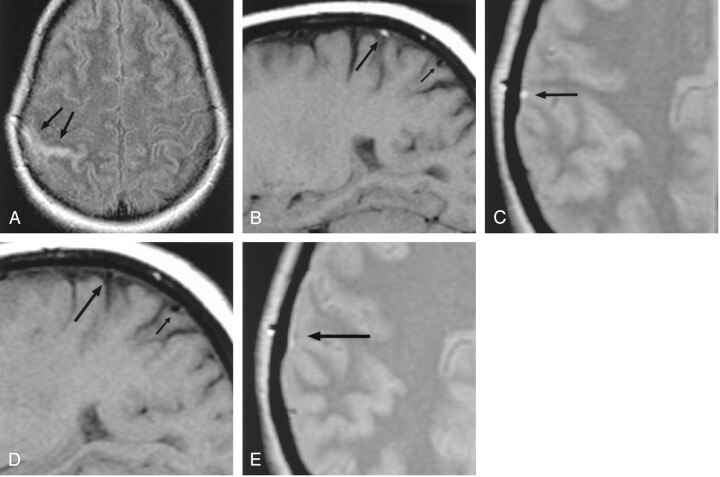Fig 2.
Patient 2, a 46-year-old woman with headaches and cortical venous thrombosis.
A, Axial FLAIR (10,327/158/2200) MR image shows focal sulcal hyperintensity (arrows), representing SAH in the right central sulcus. T2-weighted and diffusion-weighted images (not shown) were normal.
B, Right parasagittal T1-weighted (367/14) MR image shows luminal hyperintensity (large arrow), representing thrombus, in a right convexity cortical vein, probably the vein of Trolard. This abnormality was also identified on multiple adjacent sections. A flow void (small arrow) is seen in a more posterior, normal cortical vein.
C, Axial proton density–weighted (2267/30) MR image shows luminal hyperintensity (arrow) in a right convexity cortical vein; this was identified on multiple adjacent sections.
D, Right parasagittal T1-weighted (367/14) MR image, obtained approximately 3 months after the image in panel B, shows restoration of the normal signal intensity void (large arrow), representing recanalization in the previously occluded cortical vein. The more posterior cortical vein (small arrow) is unchanged.
E, Axial proton density–weighted (2450/30) MR image, obtained approximated 3 months after the image in panel C, shows a small signal intensity void (arrow) in the previously thrombosed cortical vein.

